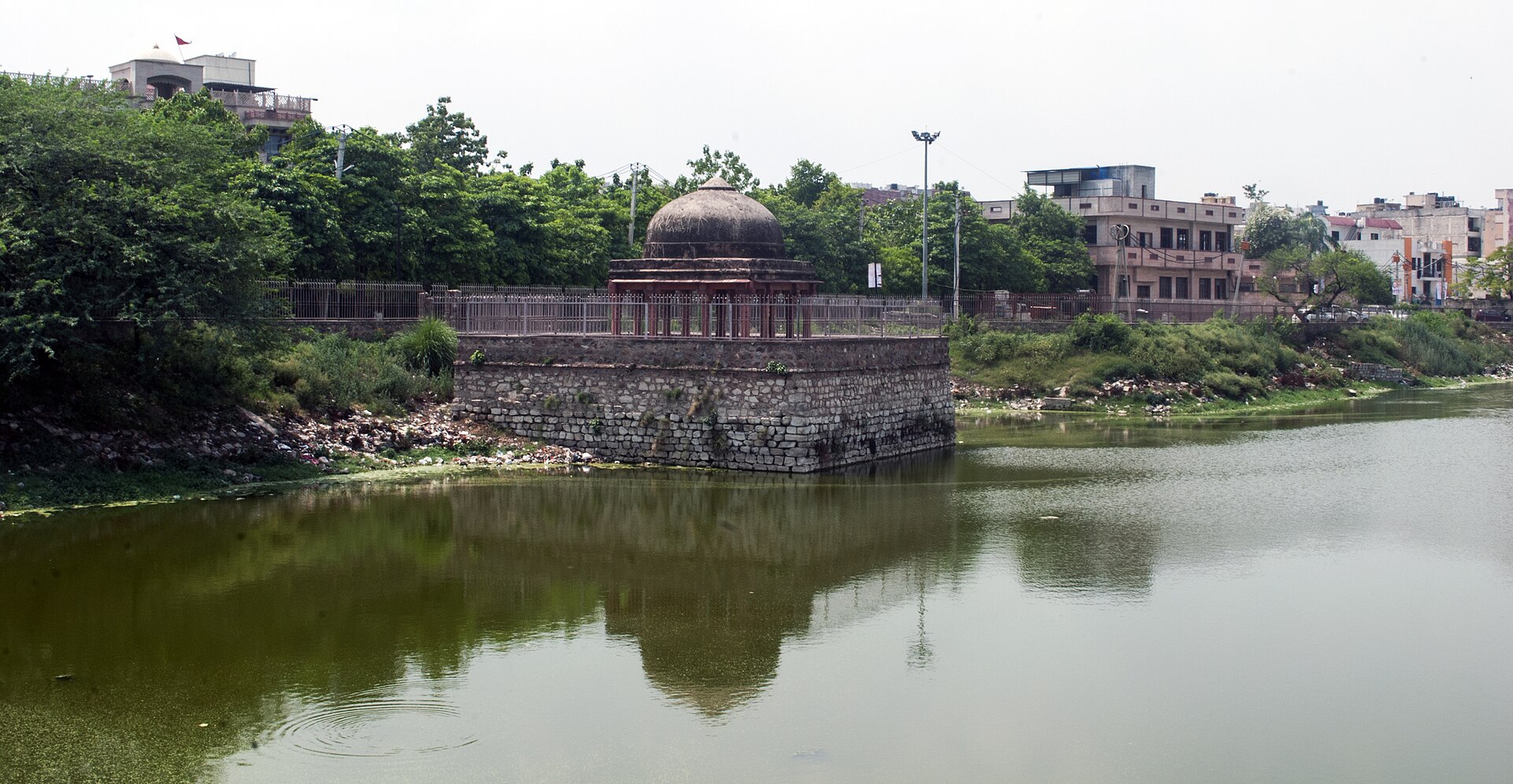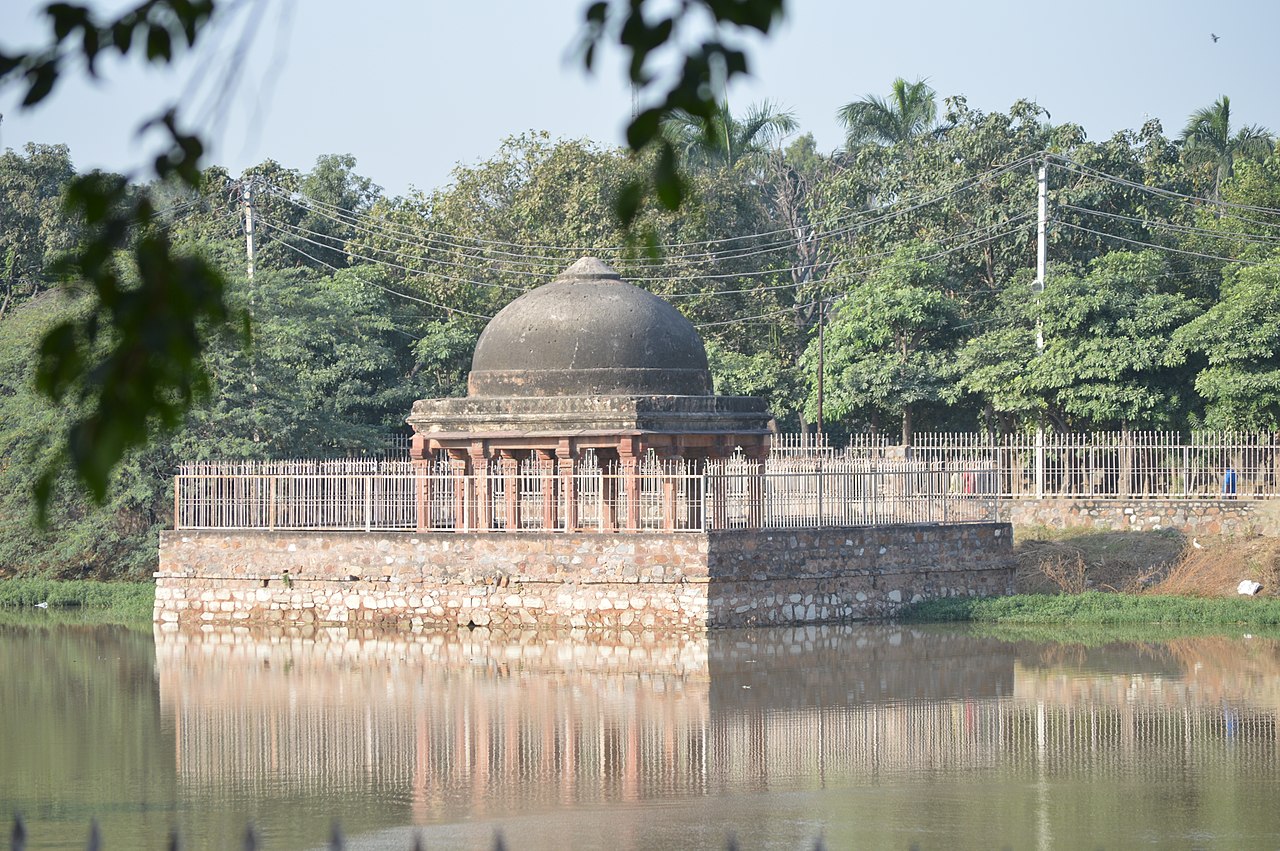.jpg)

.jpg)

The Hauz-e-Shamsi, also known as the Shamsi Talab, is a historic water reservoir in Mehrauli, Delhi, established in 1230 CE by Sultan Shams-ud-din Iltutmish of the Delhi Sultanate. It was built to supply water to the residents of the surrounding region, which was part of the Sultanate’s early capital. The hauz (meaning "tank" or "reservoir") exemplifies the sultanate's efforts to create sustainable water resources in a relatively arid region. According to legend, the site was chosen by divine inspiration in a dream. It is said that Prophet Muhammad appeared to Iltutmish in a dream and guided him to establish the reservoir at a particular spot, which he marked with his horse’s hoofprint. Iltutmish reportedly found this spot and marked the location with a stone containing the hoofprint, which remains a part of local lore and is preserved near the water body. Today, Hauz-e-Shamsi still exists, albeit reduced in size, and stands as a reminder of Delhi’s medieval history and the hydraulic engineering of the Sultanate period. It is surrounded by other historic structures and remains a notable part of Mehrauli’s rich cultural and architectural heritage.